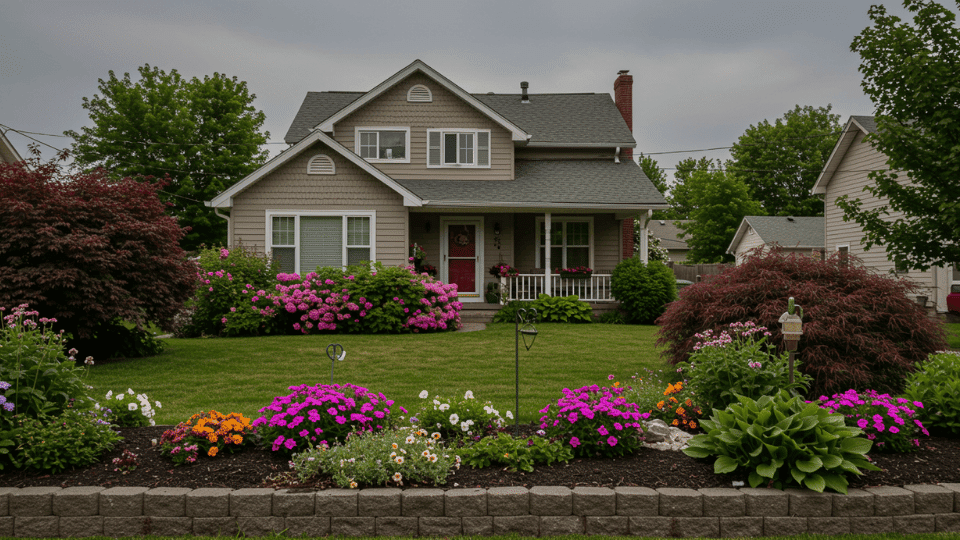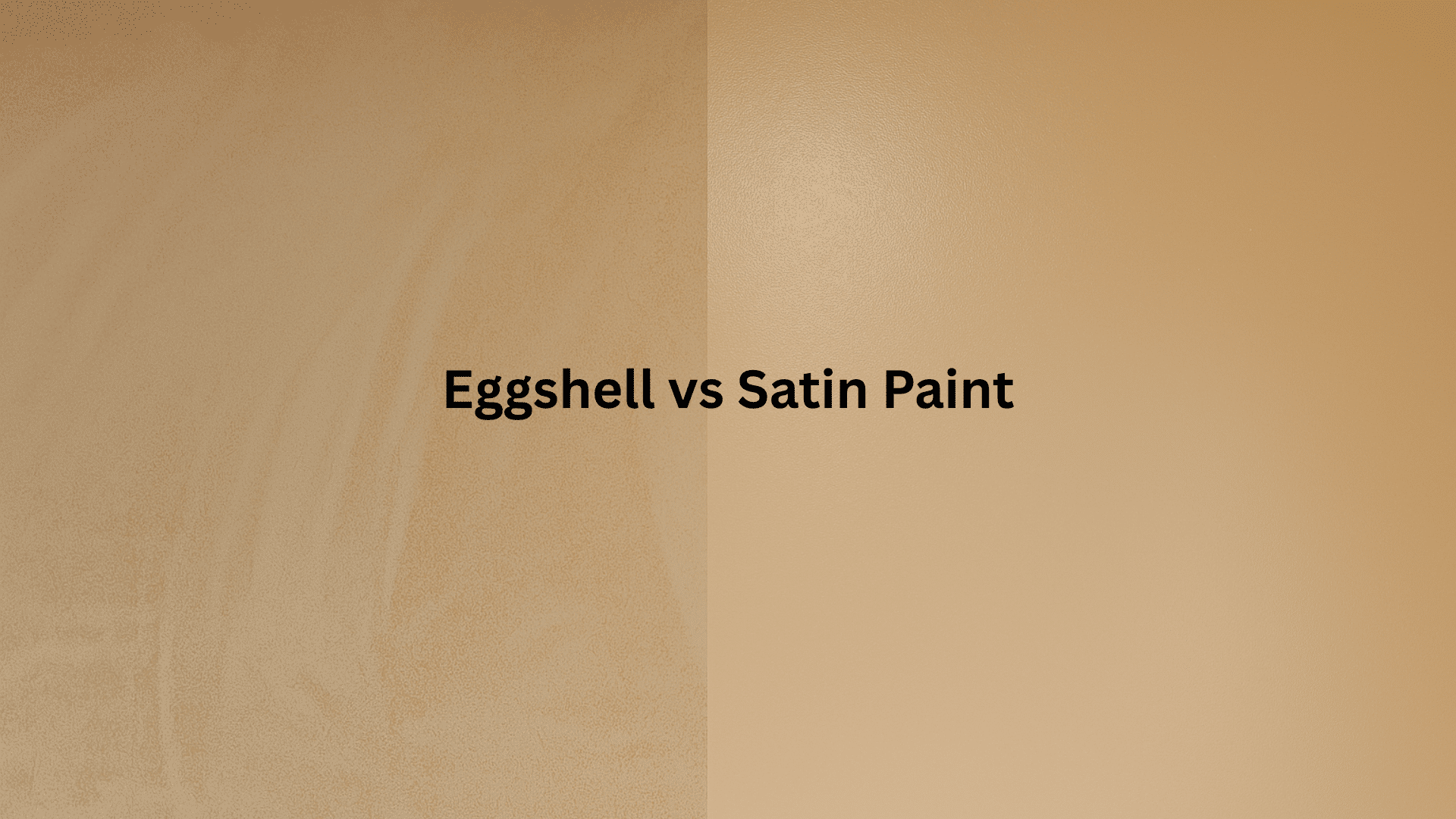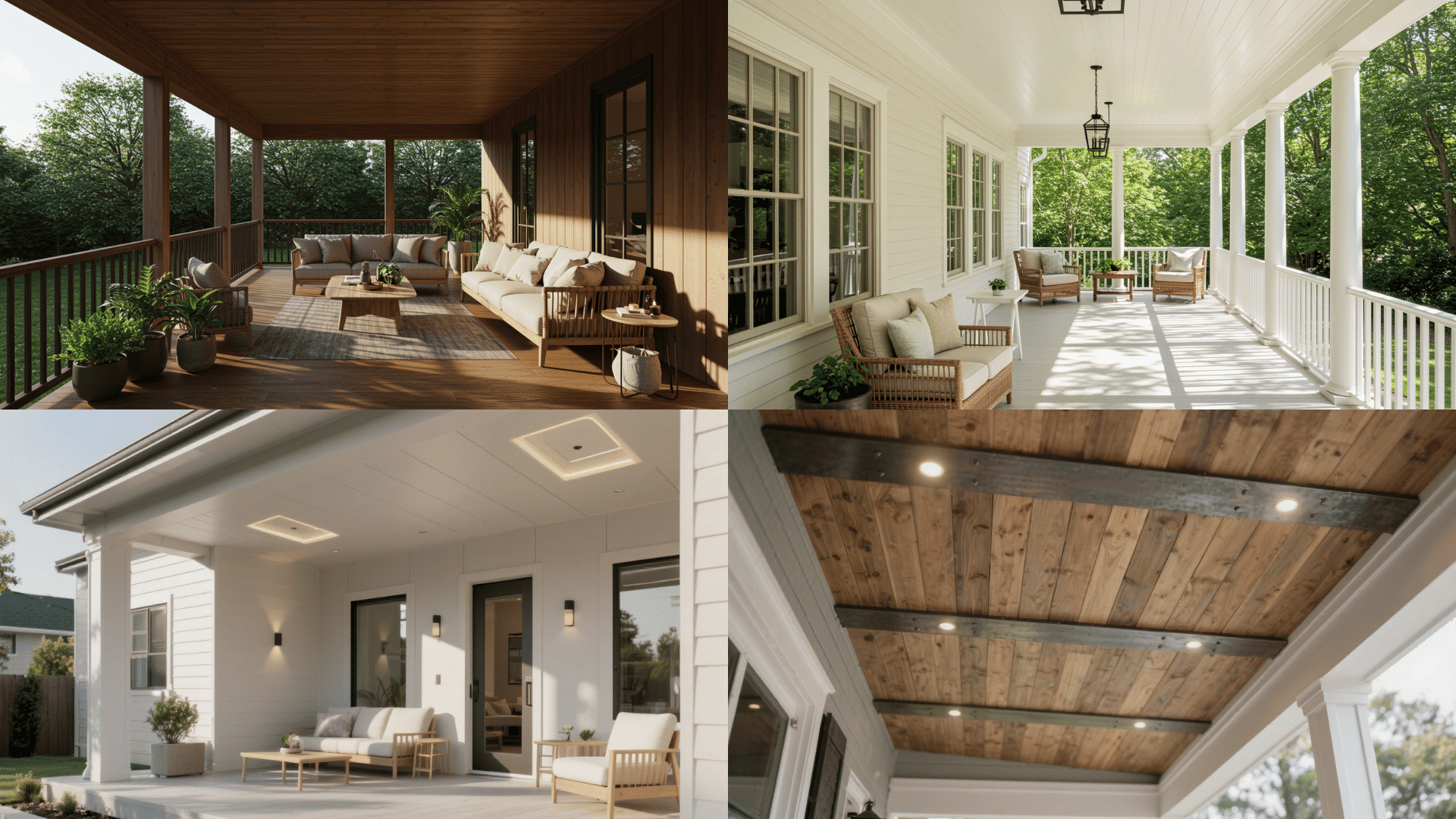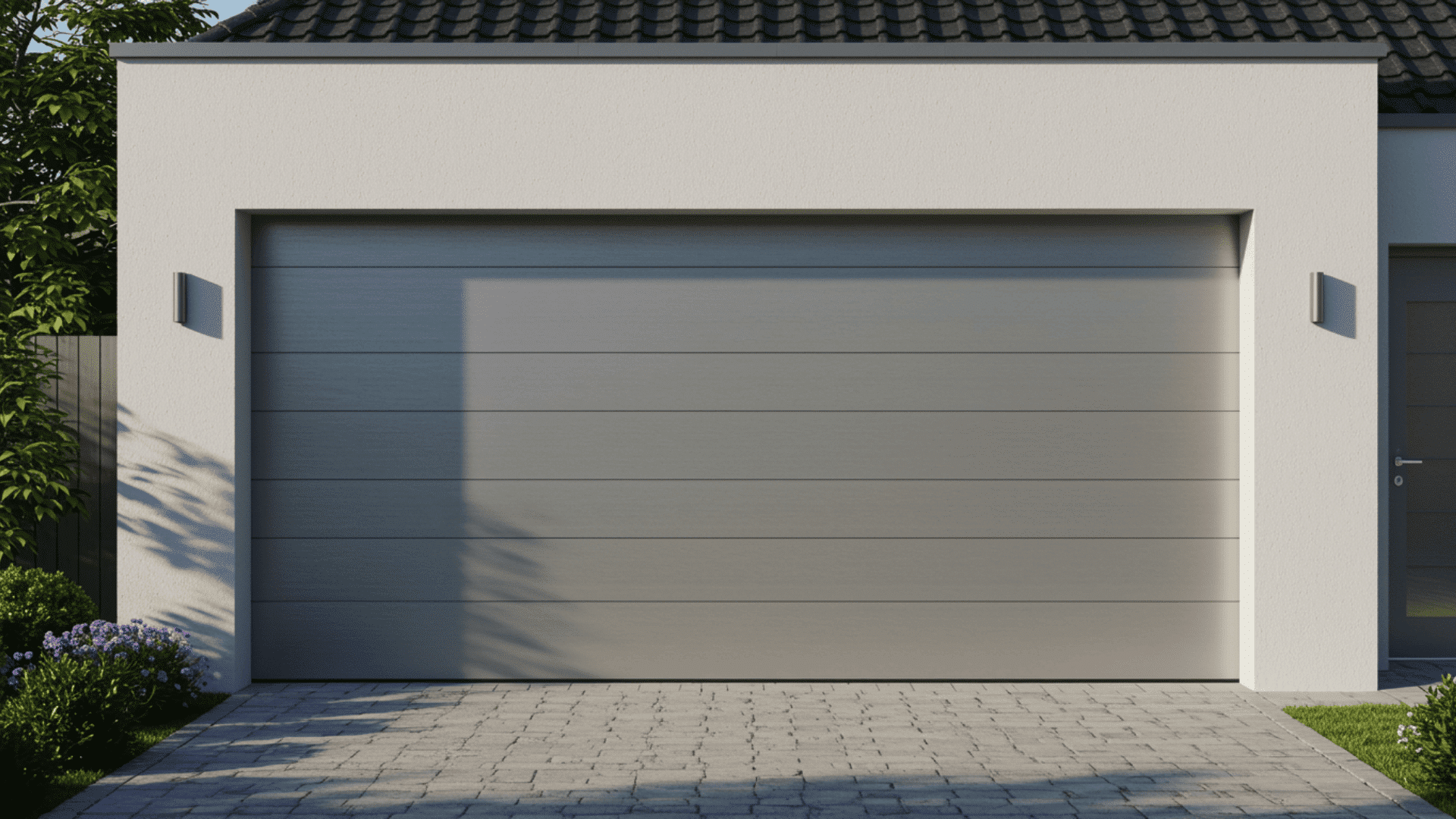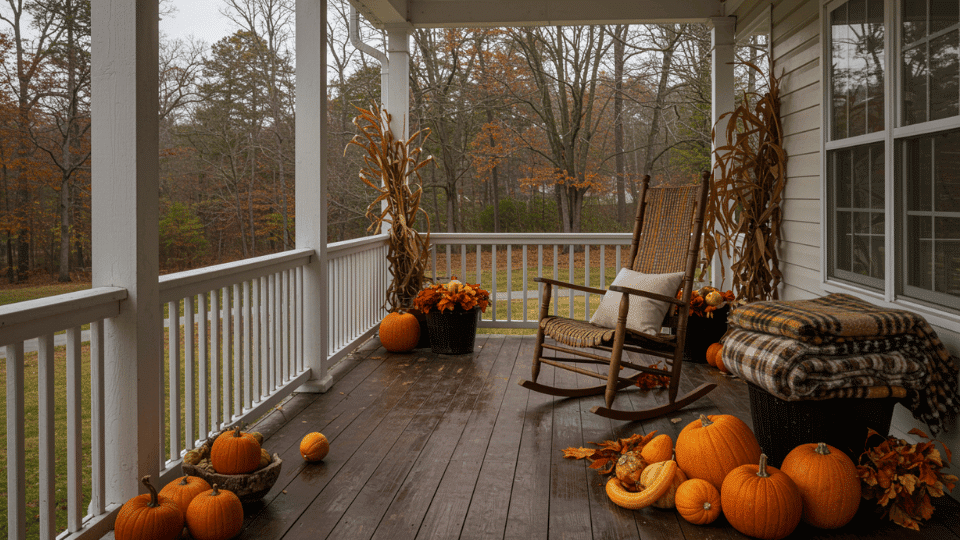Your front yard is the first thing guests see, but creating a stunning landscape doesn’t have to drain your wallet or weekends.
Here are low-cost, low-maintenance front yard landscaping ideas I’ve found for maximum impact with minimal effort. From DIY projects to smart plant choices that thrive on neglect, I’ll share practical, affordable solutions.
These cheap front yard landscaping ideas prove you don’t need a landscaper’s budget or green thumb to create a welcoming outdoor space you love coming home to.
Design Principles for a Low-Maintenance Yard
Smart planning is the foundation of a beautiful, budget-friendly front yard. Before purchasing plants or materials, consider these essential design principles to save time and money.
- Assess your space: Sketch your yard and observe sunlight patterns throughout the day to understand growing conditions.
- Group strategically: Cluster plants with similar water and light requirements to simplify care and minimize waste.
- Simplify your layout: Use clean lines and fewer planting beds to reduce weeding, trimming, and overall maintenance.
- Choose durable materials: Select locally sourced options like gravel and native stone that withstand weather without frequent replacement.
- Invest wisely: Prioritize perennials and evergreens that return annually, plus quality hardscaping elements like pavers and permanent edging.
These principles create a cohesive design that looks intentional rather than random. With thoughtful planning upfront, you’ll enjoy a stunning yard that practically maintains itself.
Easy and Affordable Planting Ideas
Smart plant choices are the foundation of low-maintenance landscaping. These budget-friendly options thrive with minimal care while delivering year-round beauty and curb appeal.
1. Plant Drought-Tolerant Shrubs
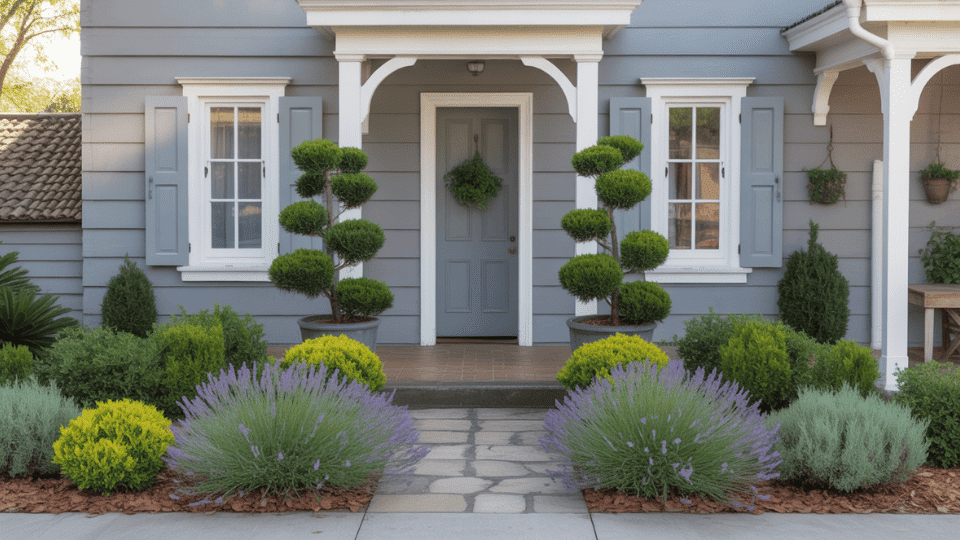
Boxwood, lavender, and juniper require little water once established and maintain their shape with minimal pruning, making them perfect foundation plants.
- Creative Addition: Plant in groups of three or five for a balanced, professional look.
- Maintenance Tip: Water deeply during the first season, then only during extended dry spells.
- Placement Tip: Position along walkways or foundations where they’ll soften hard edges.
2. Use Native Plants

Native species are naturally adapted to your climate and soil, requiring less water, fertilizer, and pest control than exotic varieties.
- Creative Addition: Mix different heights and bloom times for continuous seasonal interest.
- Maintenance Tip: Mulch around plants to retain moisture and suppress weeds.
- Placement Tip: Match plants to existing light conditions rather than trying to change them.
3. Create a Perennial Flower Bed
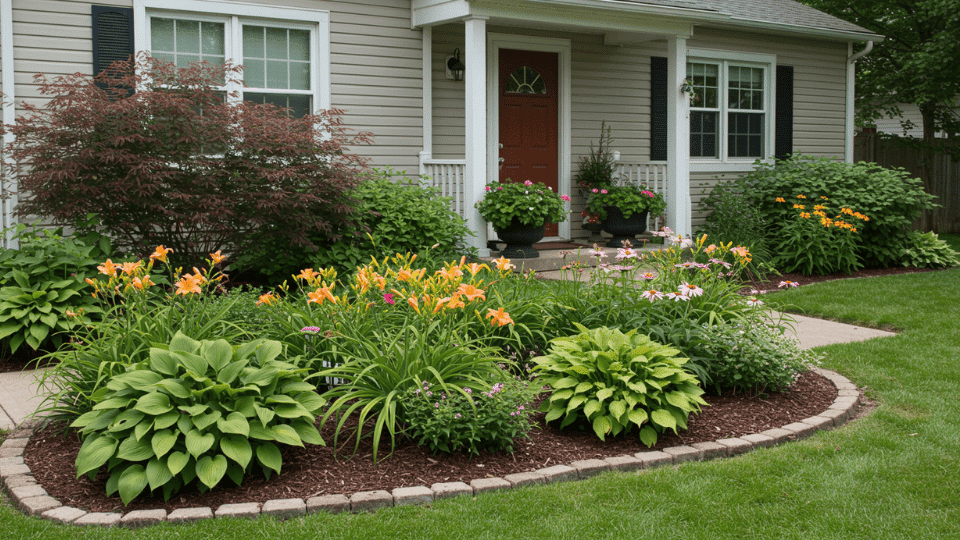
Perennials like daylilies, coneflowers, and hostas return year after year, eliminating the need to replant annually and saving money over time.
- Creative Addition: Arrange by height with the tallest plants in the back and the shorter ones in the front.
- Maintenance Tip: Deadhead spent blooms to encourage more flowers throughout the season.
- Placement Tip: Create beds along borders or fences for defined garden spaces.
4. Replace Grass with Ground Covers

Creeping thyme, sedum, or mondo grass eliminates mowing while providing attractive, carpet-like coverage that naturally chokes out weeds.
- Creative Addition: Use different ground cover varieties to create textured patterns and visual interest.
- Maintenance Tip: Water regularly during establishment, then rarely afterward.
- Placement Tip: Use in areas where grass struggles, like slopes, dry patches, or heavy shade.
5. Grow Ornamental Grasses

Ornamental grasses like fountain grass and blue fescue add movement and texture while requiring virtually no care once established.
- Creative Addition: Plant in drifts or as accent pieces near corners and entryways.
- Maintenance Tip: Cut back to ground level once annually in early spring.
- Placement Tip: Position where you can see them sway in the breeze from windows or seating areas.
6. Plant Evergreen Bushes
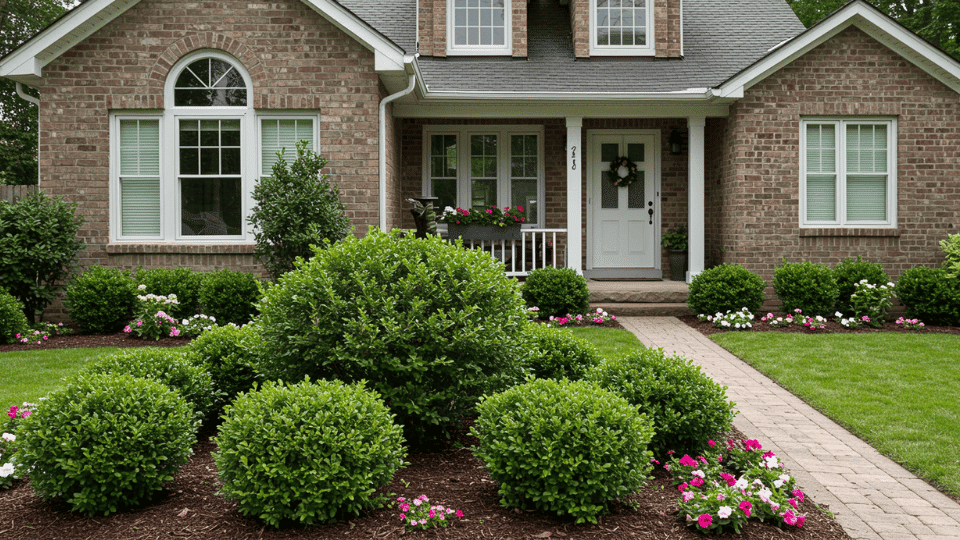
Evergreens like boxwood, holly, and dwarf conifers provide year-round color and structure without seasonal die-back or constant replacement.
- Creative Addition: Use as anchor plants at corners or to frame your front door symmetrically.
- Maintenance Tip: Prune lightly in late spring to maintain shape and encourage dense growth.
- Placement Tip: Plant as foundation screens or privacy barriers along property lines.
7. Add Container Gardens
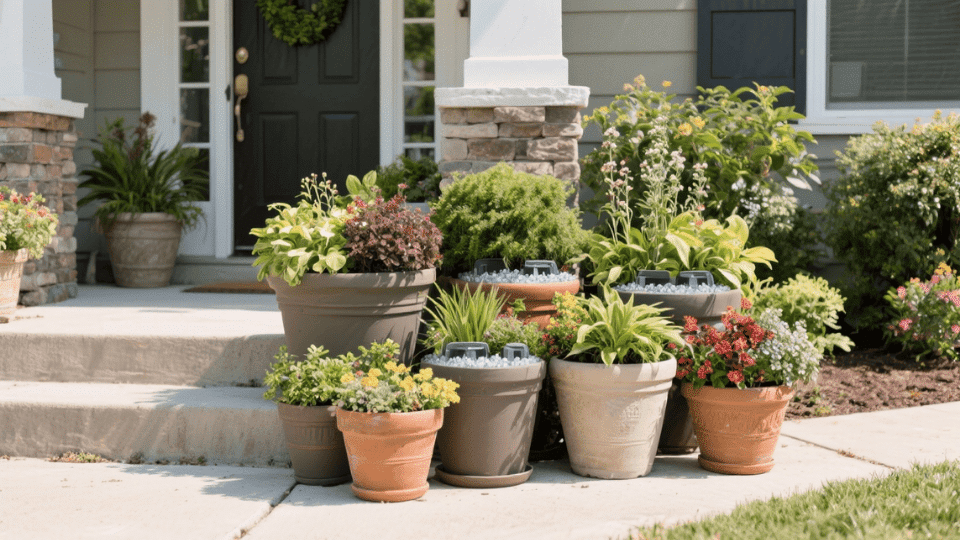
Potted plants offer flexibility to change your display seasonally and move them as needed for sunlight or design changes.
- Creative Addition: Group containers in odd numbers with varying heights for dynamic visual impact.
- Maintenance Tip: Use self-watering containers or add water-retention crystals to reduce watering frequency.
- Placement Tip: Flank your front door or steps for an instant focal point that welcomes.
Simple Landscaping and Design Ideas
Change your front yard with these easy hardscaping projects. These design elements add visual interest while drastically reducing maintenance needs and water usage.
8. Swap Lawn for Gravel

Replacing grass with gravel or mulch eliminates mowing, watering, and fertilizing while creating clean, modern spaces for accent plants or decorative features.
- Creative Addition: Layer different-colored gravels, or mix river rock with decorative mulch, for depth.
- Maintenance Tip: Install landscape fabric underneath to prevent weeds from pushing through.
- Placement Tip: Use in full sun areas or parking strips where grass struggles to grow.
9. Build a Rock Garden

Rock gardens showcase drought-tolerant plants between natural stones, creating a low-water landscape that thrives in hot, dry climates with minimal care.
- Creative Addition: Vary rock sizes and bury larger boulders partially for a natural, weathered appearance.
- Maintenance Tip: Choose succulents and alpine plants that need watering only during extreme drought.
- Placement Tip: Perfect for sloped areas or corners where water runs off too quickly.
10. Add Mulch Around Trees

A ring of mulch around tree bases suppresses weeds, retains soil moisture, and protects roots while creating tidy, finished-looking planting areas.
- Creative Addition: Keep mulch rings uniform in size and avoid volcano-style piling against trunks.
- Maintenance Tip: Refresh mulch annually with a thin layer to maintain appearance and weed control.
- Placement Tip: Extend mulch to the tree’s drip line for maximum root protection and benefit.
11. Design Curved Pathways

Curved paths made from bricks or stepping stones add charm and guide visitors naturally through your landscape with visual flow and interest.
- Creative Addition: Use gentle curves rather than sharp turns for a more organic, welcoming feel.
- Maintenance Tip: Set stones in sand rather than concrete for easy releveling if they shift.
- Placement Tip: Lead pathways to focal points like your front door, mailbox, or garden features.
12. Create a Dry Creek Bed
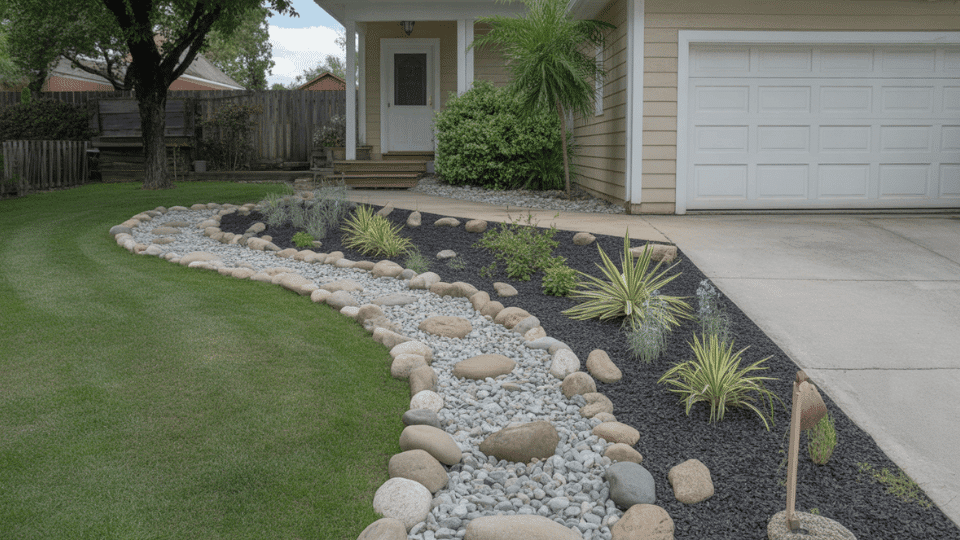
A dry creek bed made from river rocks adds decorative appeal while channeling rainwater away from foundations and naturally preventing erosion.
- Creative Addition: Line edges with larger boulders and fill the center with smaller smooth stones.
- Maintenance Tip: Rake rocks annually to remove accumulated leaves and keep them clean.
- Placement Tip: Follow natural drainage patterns from downspouts or low spots toward street drainage.
13. Install Paver Walkways
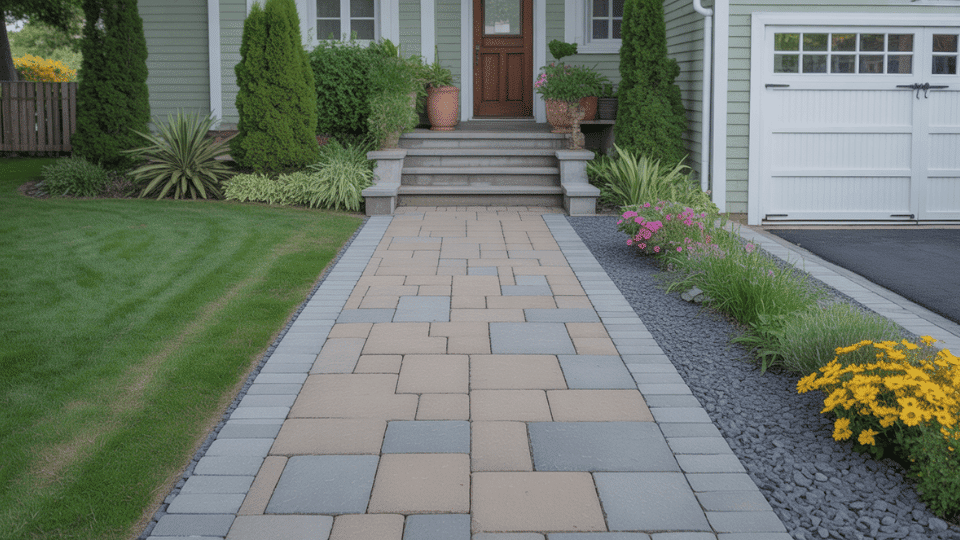
Concrete or stone pavers create durable, attractive pathways that handle foot traffic without cracking and require only occasional sweeping to stay clean.
- Creative Addition: Mix paver colors or create patterns, such as herringbone, for added visual appeal.
- Maintenance Tip: Fill joints with polymeric sand to secure pavers in place and prevent weed growth.
- Placement Tip: Install from the driveway to the front door and to any frequently accessed side gates.
14. Add Raised Beds
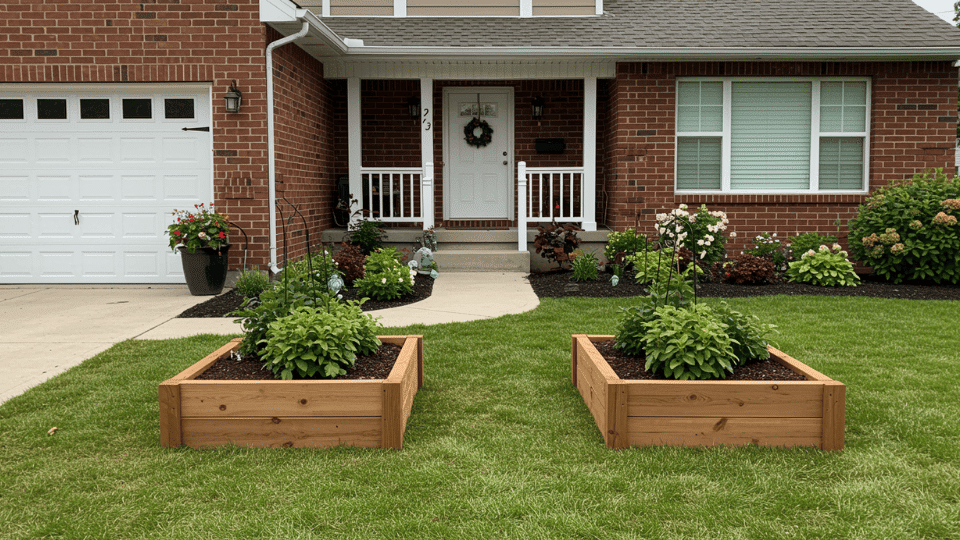
Raised beds define planting areas, improve drainage, and bring gardens to a comfortable height, reducing back strain during planting and weeding.
- Creative Addition: Build matching beds in symmetrical pairs for a formal, organized landscape design.
- Maintenance Tip: Fill with a high-quality soil mix to reduce compaction and improve plant health
- Placement Tip: Position along the front of your house or flanking entryways for maximum curb appeal.
Budget-Friendly Decorative Features
Add personality and charm to your front yard with these affordable decorative touches. These simple additions create focal points and increase curb appeal without requiring ongoing maintenance or expense.
15. Add Solar Lighting
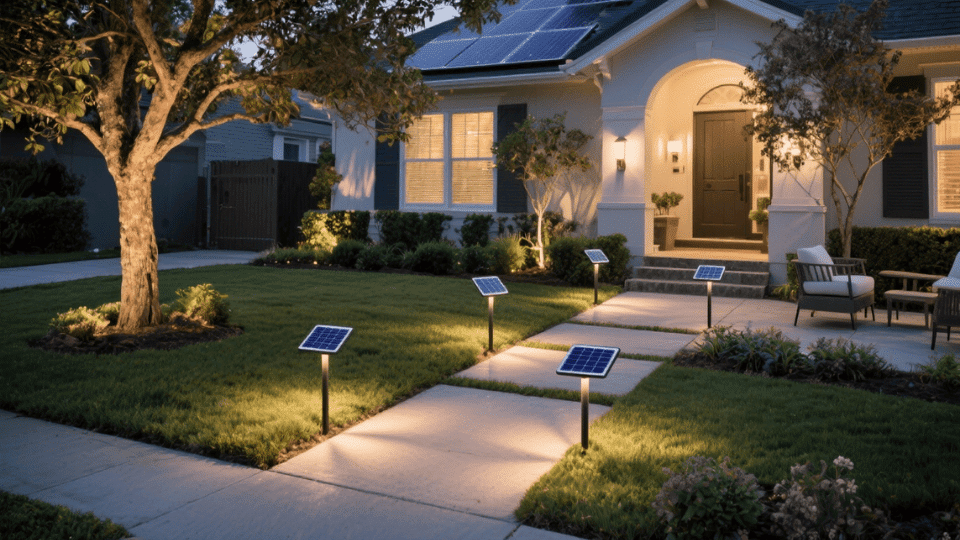
Solar lights illuminate pathways and features without electrical work or energy costs, automatically turning on at dusk to create ambiance and improve safety.
- Creative Addition: Line pathways with matching solar stakes or use spotlights to highlight trees
- Maintenance Tip: Wipe solar panels monthly with a damp cloth to maximize charging efficiency.
- Placement Tip: Position along walkways, near steps, or around seating areas where lighting improves both safety and atmosphere.
16. Use Recycled Yard Art
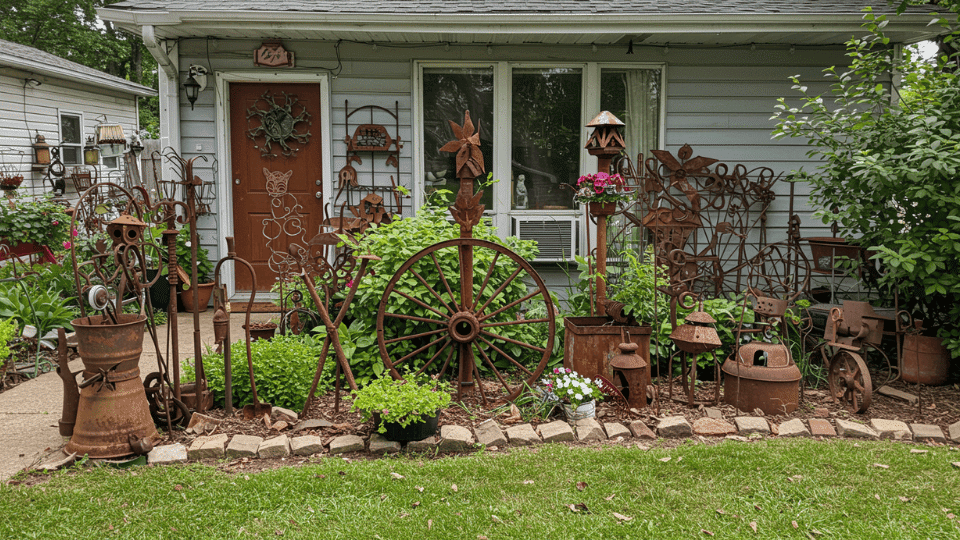
Turn scrap materials, old tools, wagon wheels, or metal pieces into unique garden sculptures that add character and conversation-starting focal points.
- Creative Addition: Group smaller pieces together or use one large statement piece as a garden centerpiece.
- Maintenance Tip: Apply clear sealant to metal art to prevent rust and preserve weathered patina.
- Placement Tip: Nestle art pieces among plants or against fences where they peek through greenery naturally.
17. DIY Planter
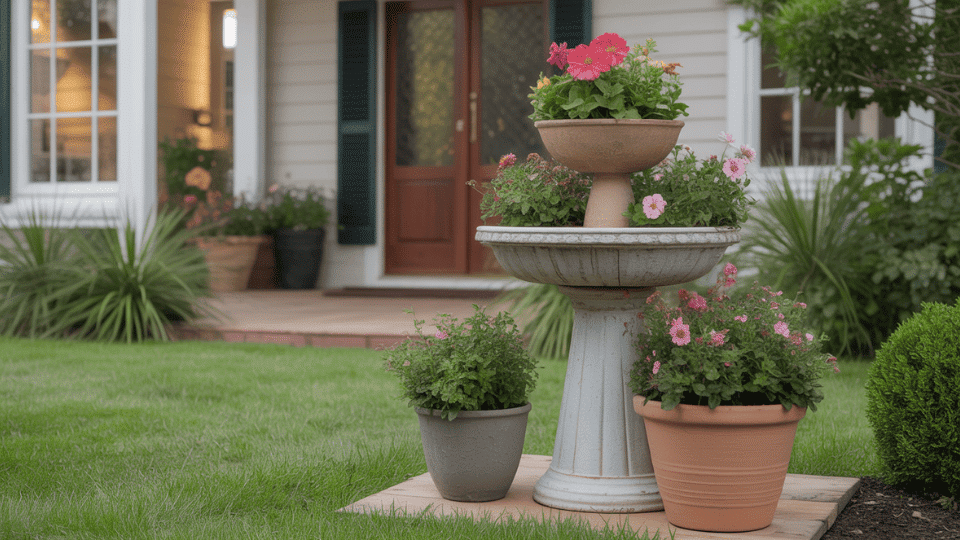
Upcycle old bowls, ceramic pots, or salvaged pedestals into functional birdbaths or oversized planters that attract wildlife and add vertical interest.
- Creative Addition: Stack pots or bowls of different sizes to create tiered planters with cascading flowers.
- Maintenance Tip: Change the water in the birdbath weekly to keep it fresh and prevent mosquito breeding.
- Placement Tip: Place birdbaths in open areas visible from windows and planters near entryways for impact.
18. Create a Seating Corner
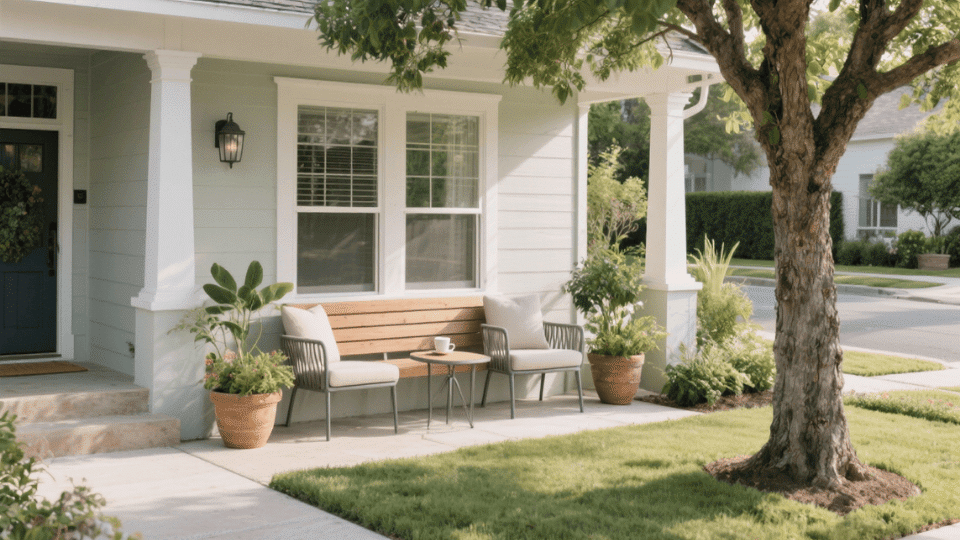
A simple bench or pair of chairs turns your front yard into a relaxing space that invites you to enjoy your landscape’s beauty.
- Creative Addition: Anchor seating with potted plants on either side and a small table for morning coffee.
- Maintenance Tip: Choose weather-resistant materials like treated wood, metal, or resin
- Placement Tip: Position under a tree for shade, or face the street for neighborly front-porch vibes.
19. Paint Old Pots for Color

Refresh tired terracotta or plastic containers with outdoor paint in bold colors that coordinate with your home’s exterior for instant visual pop.
- Creative Addition: Create a cohesive look by painting all pots in complementary colors or ombre shades.
- Maintenance Tip: Use outdoor acrylic paint and seal with weatherproof varnish for lasting color
- Placement Tip: Cluster painted pots on steps, porches, or grouped near your mailbox for concentrated color impact.
20. Hang Wall Planters
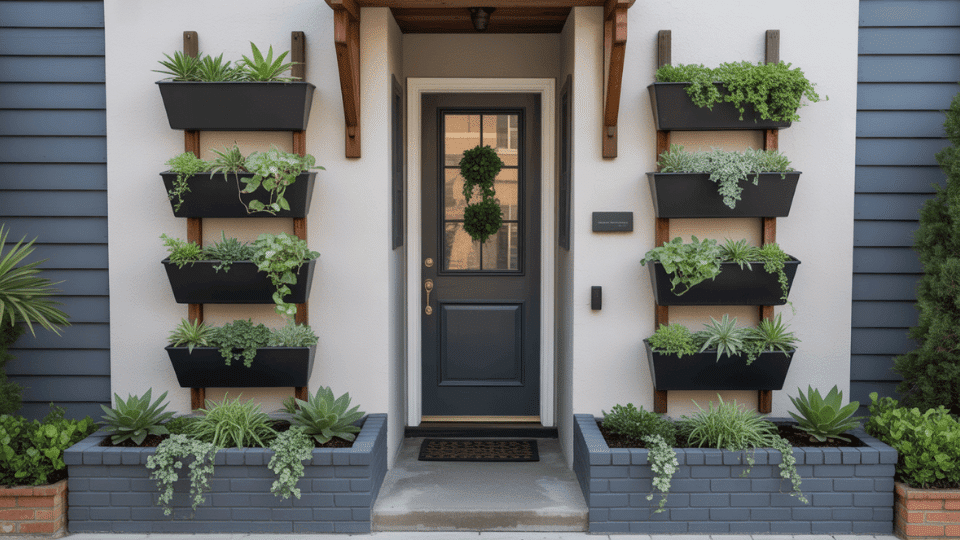
Vertical wall planters maximize small spaces by adding greenery to bare walls, fences, or garage doors without taking up valuable ground space.
- Creative Addition: Arrange multiple wall planters in geometric patterns or staggered heights for modern appeal.
- Maintenance Tip: Choose trailing plants like pothos or ivy that naturally cascade and fill containers quickly.
- Placement Tip: Mount on exterior walls flanking your front door or along blank fence sections for vertical interest.
Cheap DIY Upgrades and Lawn Alternatives
These final ideas combine functionality with creativity to reduce yard work while maximizing visual appeal. Perfect weekend projects that deliver long-term benefits with minimal ongoing effort.
21. Lay Artificial Turf in Patches
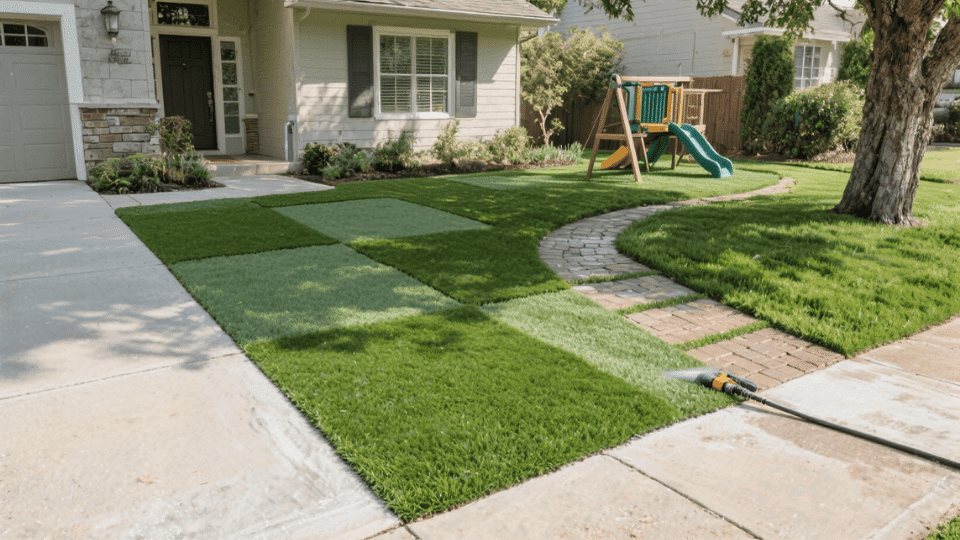
Artificial turf provides year-round green coverage in high-traffic areas or spots where real grass won’t grow, eliminating mowing and watering completely.
- Creative Addition: Use turf for small accent areas, such as between pavers or under play equipment, for clean lines.
- Maintenance Tip: Rinse occasionally with a hose and brush up fibers to keep turf looking fresh and upright.
- Placement Tip: Install in shaded areas under trees or narrow side strips where natural grass struggles.
22. Add Gravel Driveway Borders
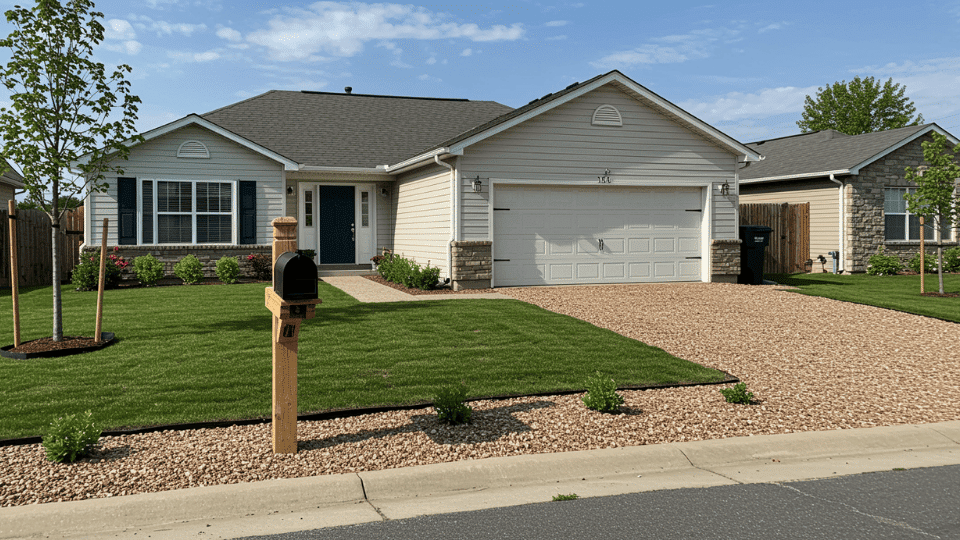
Gravel borders along driveway edges create clean definition, prevent grass encroachment, and add a polished finishing touch to your landscape.
- Creative Addition: Choose gravel colors that complement your home’s exterior
- Maintenance Tip: Edge borders annually to keep gravel contained and prevent it from migrating into lawn areas.
- Placement Tip: Run borders along both driveway sides and extend around mailbox posts for cohesive framing.
23. Build a Simple Trellis

A basic wooden or metal trellis supports climbing plants like clematis or morning glories, adding vertical interest and softening walls or fences.
- Creative Addition: Flank your front door with matching trellises for symmetrical architectural impact and greenery.
- Maintenance Tip: Choose perennial vines that return annually rather than replanting annuals each season.
- Placement Tip: Attach to blank walls, fence sections, or position freestanding near corners as living privacy screens.
24. Install Stepping Stones
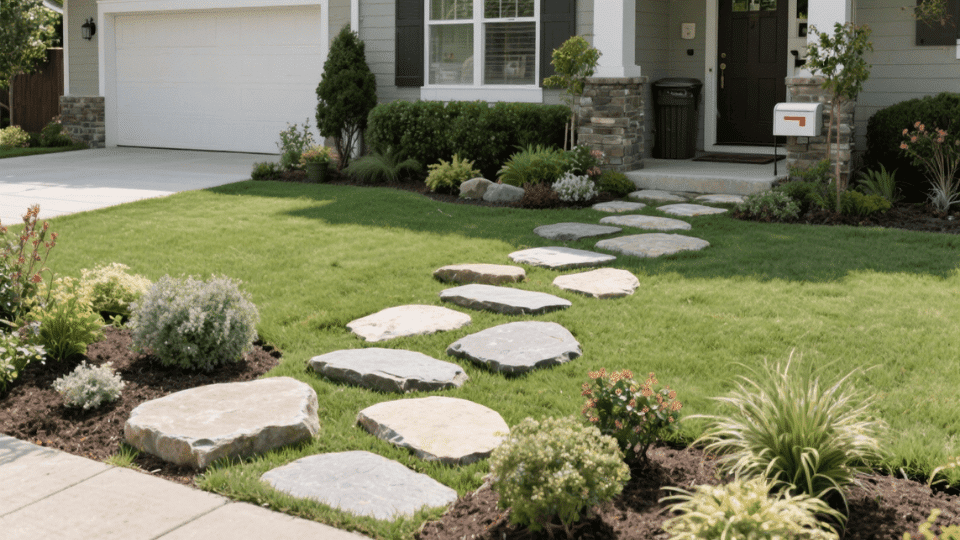
Individual stepping stones create charming pathways through planting beds, protecting grass, and directing foot traffic through your landscape.
- Creative Addition: Space stones, one comfortable stride apart, with slightly varying sizes for an organic feel.
- Maintenance Tip: Set stones level with the surrounding soil to make mowing easier and prevent tripping hazards.
- Placement Tip: Create paths to frequently accessed areas like trash bins, gates, or mailboxes
25. Create a Mini Zen Garden
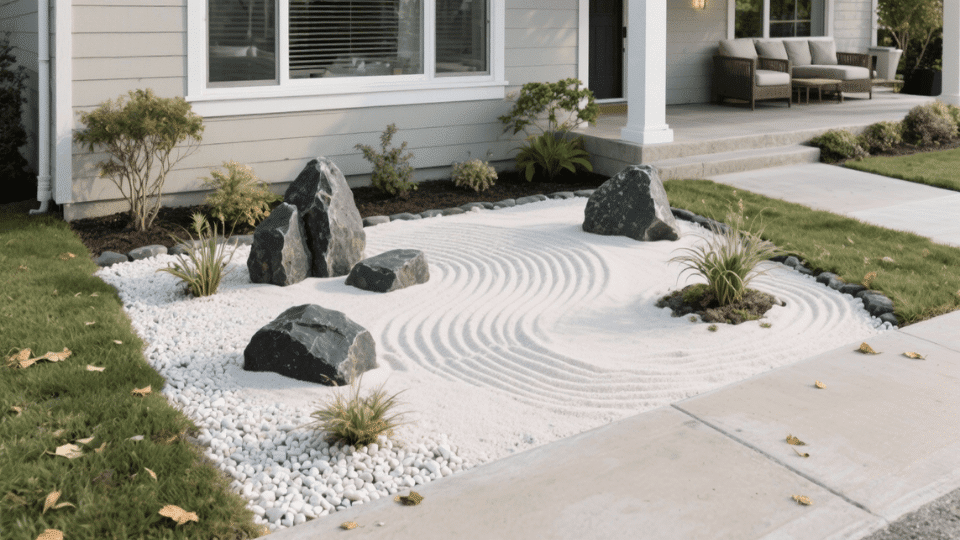
A small zen garden with sand, carefully placed rocks, and minimal hardy plants provides a calming focal point requiring almost no water or care.
- Creative Addition: Use white pea gravel or sand with dark accent rocks for a striking contrast.
- Maintenance Tip: Rake sand patterns monthly to refresh the look and remove any fallen leaves or debris.
- Placement Tip: Install in a corner visible from windows or near seating areas for meditative viewing.
26. Add Rain Barrels
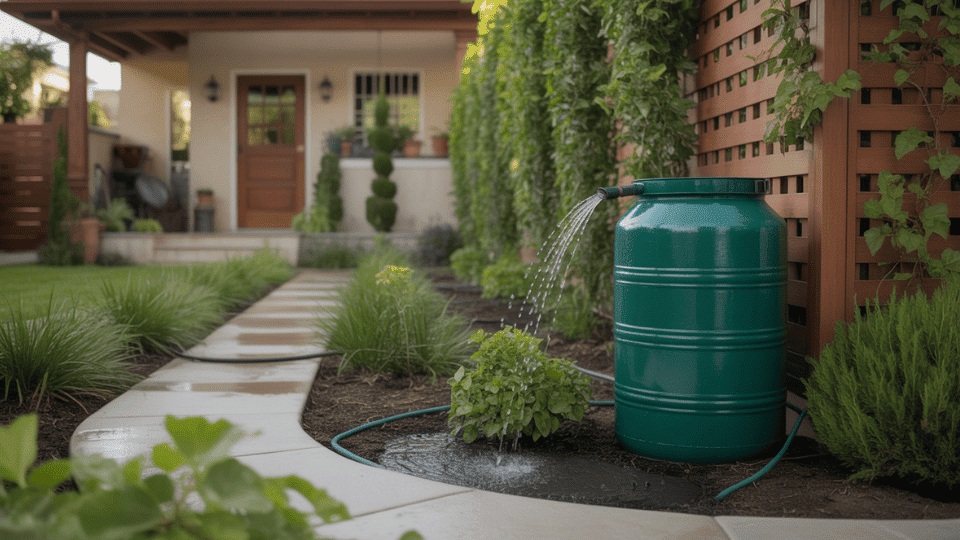
Drip irrigation delivers water directly to plant roots efficiently, while rain barrels harvest free water, reducing utility costs for eco-friendly watering.
- Creative Addition: Paint rain barrels to match your home or hide them behind lattice screens with climbing vines.
- Maintenance Tip: Flush drip lines seasonally and clean rain barrel screens to prevent clogs
- Placement Tip: Position rain barrels under downspouts and run drip lines to thirsty beds farthest from hoses.
27. Moss Lawn

Clover and moss lawns stay green naturally, require no mowing or fertilizing, and actually improve soil while providing a lush, soft texture underfoot.
- Creative Addition: Mix clover varieties for texture variation or moss in shaded areas for an emerald carpet effect.
- Maintenance Tip: Water new clover during establishment, then let it self-sustain with natural rainfall only.
- Placement Tip: Plant clover in sunny areas and encourage moss to grow naturally in shaded, moist spots under trees.
Common Landscaping Mistakes to Avoid
Even the best low-cost, low-maintenance plans can fail without proper execution. Steer clear of these common pitfalls to ensure your front yard delivers lasting results.
- Overplanting: Filling beds too densely forces plants to compete for space as they mature, requiring constant pruning and thinning that defeats your low-maintenance goals.
- Choosing high-maintenance plants: Selecting varieties that need frequent watering, deadheading, or pest control increases workload and costs instead of simplifying your landscape.
- Ignoring environmental conditions: Mismatched plants struggle in the wrong sunlight or soil conditions, while poor drainage creates soggy spots where plants rot and mosquitoes breed.
- Buying cheap materials: Low-quality mulch or flimsy edging breaks down quickly and needs frequent replacement, ultimately costing more than durable options.
- Skipping proper borders: Without defined edging, grass invades beds and plants sprawl uncontrollably, creating an unkempt look that requires constant correction.
Avoiding these mistakes saves you time, money, and frustration. Smart choices upfront mean less maintenance and better results for years to come.
Conclusion
Changing your front yard doesn’t require a massive budget or endless weekends of work.
With these low-cost, low-maintenance front yard landscaping strategies I’ve shared, you can create stunning curb appeal that practically takes care of itself.
I recommend starting small by choosing one or two cheap DIY front yard ideas that match your space and skill level.
I’ve shown you that cheap front yard landscaping ideas can deliver professional results without the professional price tag. Ready to get started?

